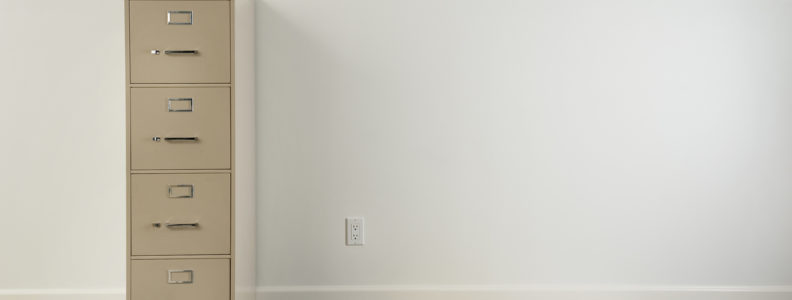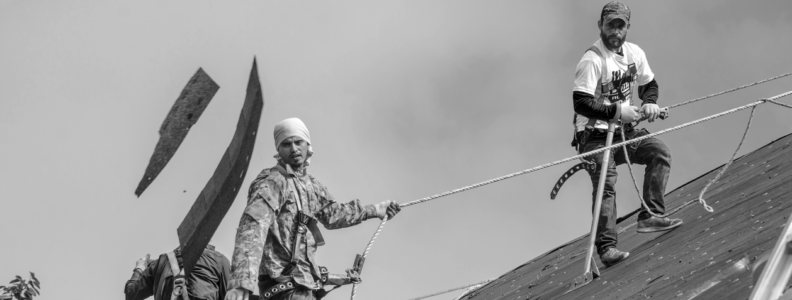Blog

What Does A Commercial General Liability Policy Really Cover Anyway?
You’re a business owner and you have a Commercial General Liability policy. Why do you have it? What’s the point? What does this policy really cover, anyway?
Many small businesses have a Commercial General Liability policy (which I will now call a “CGL” to save my fingers all the extra typing work) because someone made them get it. A sandwich shop is leasing a space in a shopping center and the landlord said it needs to have CGL. An electrician scored a contract to install the electrical system in a commercial tenant improvement project and the general contractor said he needs to have it.
And so, “Fine,” says the sandwich shop and the electrician, “I’ll get it the CGL in order to satisfy the contract,” treats it as another annoying business expense, and then moves on with the thing he’s good at: satiating hungry lunch-goers and making buildings light up.
The policy comes in the mail and since it doesn’t say any money is owed at this point, it gets moved to the “important but not urgent” stack for a few months before it eventually gets put in a file cabinet next to the desk a few feet from the stack it once resided. And from there, that policy sits and leads a lonely life of sadness in a dark cramped file cabinet. Poor policy.
At some point you may have an incident; something that makes you wonder about your insurance. An angry Yelper claiming he cracked a tooth on your cheese steak. A failure in the light system causing the building lights to not go on causing the business inside the building to cease operations. Or maybe you’re just curious about that thing you’re paying for each month. Regardless something has piqued your interest and you’re now wondering what this insurance is for.
This is where I step in. I will explain what your insurance is for. I’ll do so briefly and in plain English so you can see the Big Picture. If you really want to get into the details – and there are many – here’s something for you: The CG 00 01 04 13, the policy that your CGL policy is or is based on.
Here we go:
The primary duty of a CGL policy is to pay for bodily injury and property damage that you are responsible for. This is called Coverage A – Bodily Injury and Property Damage Liability.
What is bodily injury and what is property damage? Here are some examples. When your customer slips, falls, and tears an ACL in your restaurant, that’s bodily injury. When you install some switches on a switchboard and the switchboard burns up, that’s property damage.
How do you know if you’re responsible for the damage? In the examples above, were you really responsible for the slip and fall? Did you really cause the switchboard to burn up? Maybe. Maybe not. Can you call your insurance company and just tell them that someone tore an ACL at your restaurant so they need to pay? No. First, someone has to accuse you of being responsible before your claim adjusters will pick up the phone. The injured sandwich eater has to make a claim against you. The owner of the switchboard has to file suit. In order for any claims adjuster to dust off your policy and see if there’s going to be any payments, someone has to put it in writing that they suffered bodily injury or property damage and that it’s your fault it happened.
At this point you may be asking: what if someone files a claim against me and I’m not really at fault? That’s a great question. The answer is: your insurance company will defend you. They are your legal team. Your CGL policy pays for defense even when you are merely accused of being at fault.
Coverage for bodily injury and property damage is not just limited to incidents happening on your premise while you are operating your business, as you saw in the examples above. Your policy will cover you for the same types of losses that arise out of your product or your completed operation. What does that mean? For product liability, let’s say that you are a winery and you sell bottles of wine through a club membership. One of your wine club members cuts his finger on your jagged glass bottle. That is bodily injury arising out your product. We also have completed operations. Let’s say you are a plumber and you repaired a plumbing system in an apartment building. Six months after you finish the job, the plumbing system begins to leak and trickle water down to the apartments below causing damage to the drywall. This is property damage arising out of your completed operations.
There you have it: Coverage A – protection for you against bodily injury and property damage to others – is the main thing. But in the spirit of being complete, let’s move on to Coverage B and C.
Coverage B – Personal and Advertising Injury Liability. This part covers “injury” (that is: hurt feelings, being offended, outraged, or appalled, including consequential actual bodily injury) to others that arises out of a specific list of offenses that you and your business caused:
a. False arrest, detention or imprisonment;
b. Malicious prosecution;
c. The wrongful eviction from, wrongful entry into, or invasion of the right of private occupancy of a room, dwelling or premises that a person occupies, committed by or on behalf of its owner, landlord or lessor
d. Oral or written publication, in any manner, of material that slanders or libels a person or organization or disparages a person’s or organization’s goods, products or services
e. Oral or written publication, in any manner, of material that violates a person’s right of privacy
f. The use of another’s advertising idea in your “advertisement”
g. Infringing upon another’s copyright, trade dress or slogan in your “advertisement”
Coverage B is rarely used unless you’re in the printing or publishing business. But it could have some application to all types of businesses due to the proliferation of online social media by businesses and its employees. For example: your employee writes a scathing Facebook post blasting one of your customers. You might appreciate the libel coverage Coverage B provides.
Lastly, Coverage C – Medical Payments. This is the coverage that my clients, if they happen to read their policy, storm into my office, slam down their paperwork on my desk and shout, “Eli, you said I had a million dollars of coverage for bodily injury, but right here – see? – is says ‘Medical Payments: $5,000! I want my money back!”
OK, no one has ever done that. But a few of my clients have politely called with a few questions about what looks like a contradiction on their policy. You see, Coverage C is usually limited to somewhere around $5,000 to $10,000 and if you’re not aware of the differences between Coverages A and C, you might be ready to storm your agent’s office too.
Coverage C is a special additional limit of insurance that applies to bodily injury that is caused by an accident on or near your premise or because your operation that is not necessarily your fault. The difference between Coverage A and C is that with Coverage A you have to be at-fault for the policy to pay and Coverage A usually has a much higher amount that can be paid out, like $1,000,000, as opposed to Coverage C that as you saw above has somewhere around $5,000 – $10,000.
So what is the purpose of this Medical Payments coverage? It is to offer quick payment to satisfy minor injury without having to go through the process of proving you were at fault. A quick payment that buttons someone’s minor injury up can prevent a much larger lawsuit from happening. Medical Payments is like a Band-Aid and a lollipop. Feel free to use a different analogy.
There you have it – the big picture view of your CGL policy. Again, this is not all-encompassing. There are 7 (out of the 16) pages of Exclusions on a CGL policy which means lots of things can happen that aren’t covered. But, lots of things that can happen ARE covered, and it can truly save your business from financial disaster. So go ahead, pull that lonely policy out of the file cabinet and have a good read tonight knowing that the payment you make every month is actually doing something good for your business.
 ELI GILLESPIE
ELI GILLESPIE
I’m the commercial producer and owner at Gillespie Insurance Services.
SCHEDULE A CALL
SEND EMAIL





